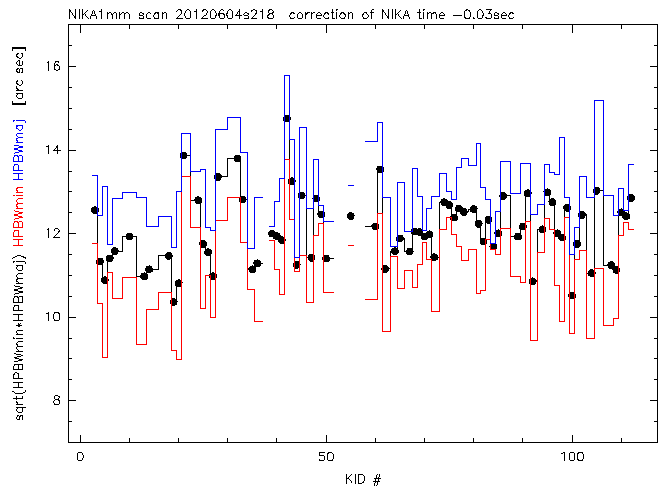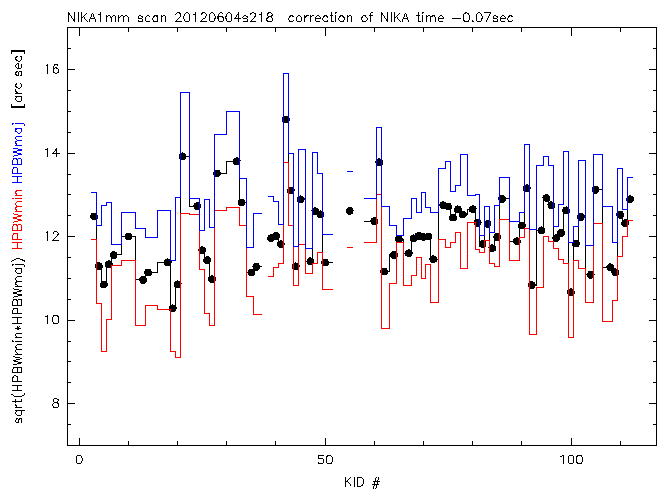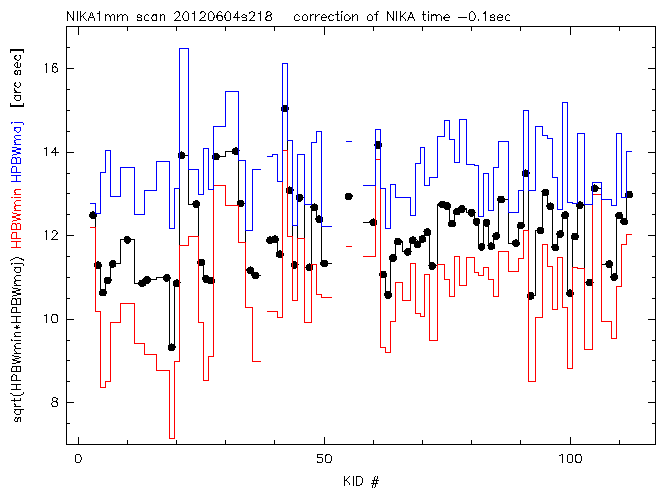Plateau
Saturday 2-06-2012
AM questions: 1) the plateau is still there or not ? 2) what about the glitches ? 3) is the baseline frequency noise the same we had in lab for these arrays ?
RZ, 13:02 the plateau is there, glitches did not check:
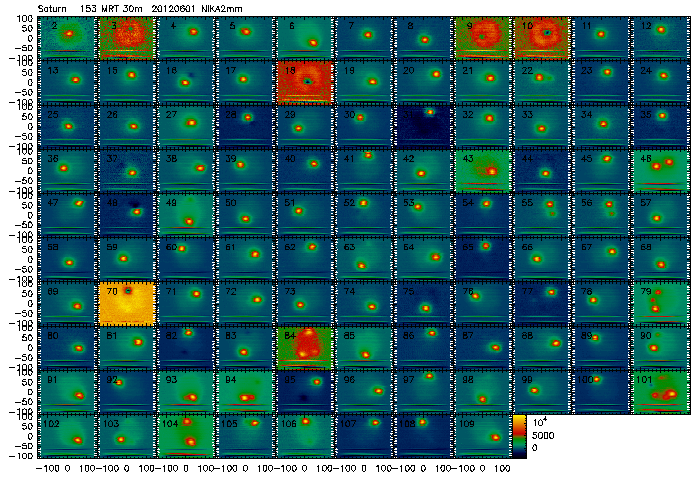
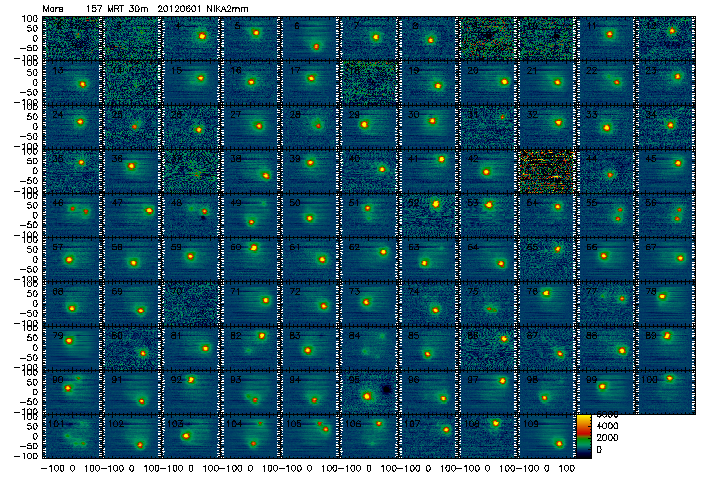
AM 13h30. Thanks for the first feedback on the plateau. Uhhmm. If it is the very same plateau (same intensity as in 2011 ?) the simplest 'non-linear electronics' explanation loses points. If on the other hand it's at least weaker .. it would be an indication of something at least. In 2010 we didn't have it; that's the more shocking point. OK, we'll have time later for deeper discussions. Now I wish you all good (at least decent) weather !
Sunday 3-06-2012
RZ, 23:29 More news concerning the plateau: it might be focus dependent. The figures below show a negative "plateau" @1mm and a ring "plateau" @2mm in a defocused map. The focus was set to -0.6mm, the correct value should be around -1.5mm. The ring structure of the "plateau" @2mm is best visible in the off res. KIDs. It has to be checked whether focus is really the reason.

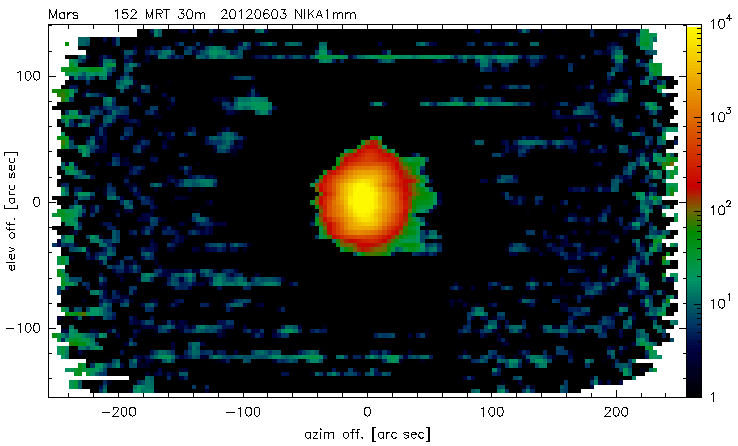
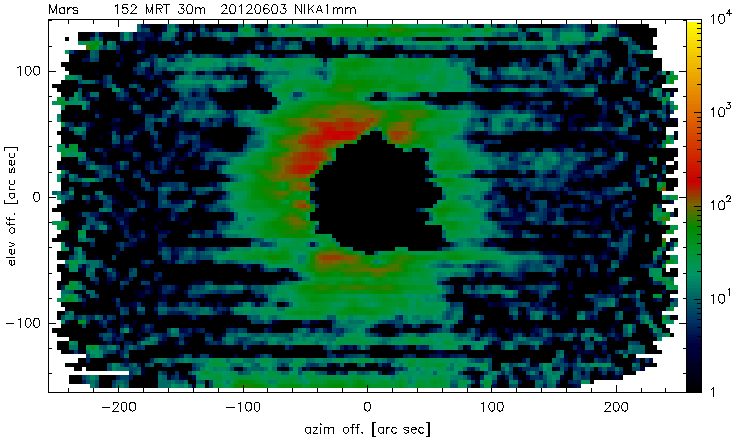

Monday 4-06-2012
RZ, 13:07 Update on the plateau: the off. resonance pixels @1mm show a positive plateau (below), the working pixels show in all but 4 cases a negative plateau (fig. "negative plateau @1mm per pixel" on 3-06-2012).
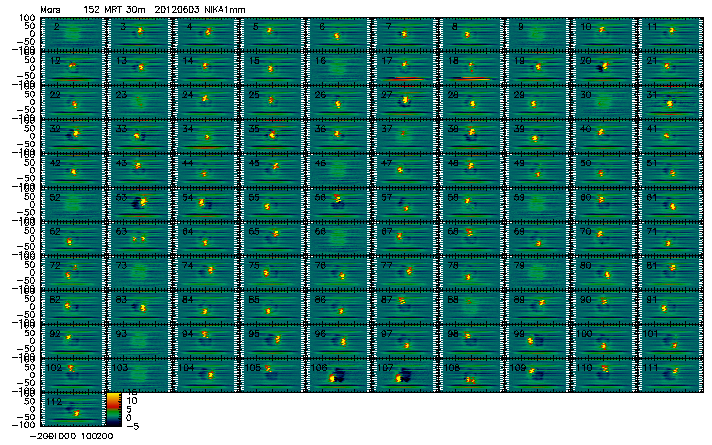
The plateau introduces quite significant ambiguity in calculation of the beam widths. Whereas @2mm the beam profile can be assumed as a sum of 2 Gaussians, @1mm this is not the case (and it was not during run 3). Further ambiguity introduces the variability of the plateau, i.e. its dependance on focus. The figures below show the cross-scan #155 observed on June 3rd. At 2mm the 1-component fit gives FWHM~20.9*20.5arcsec, the 2-component fit gives FWHM~18.7*18.3arcsec. At 1mm the difference between 1- and 2-component fits is of course larger but - because of the shape of the plateau + the error beam - the fits are not reliable.
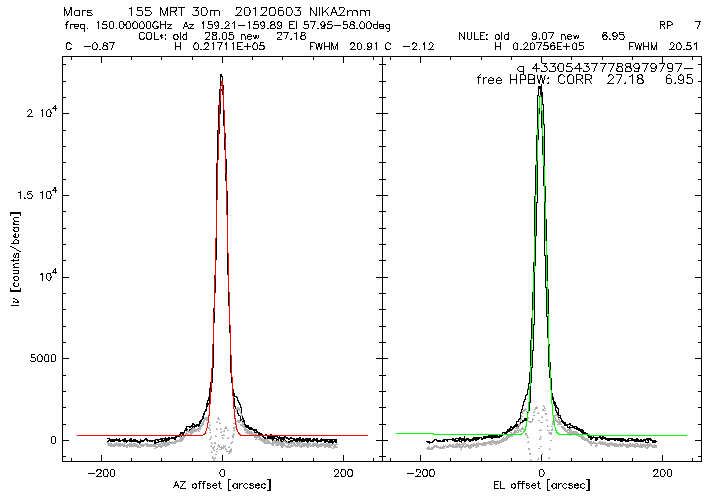
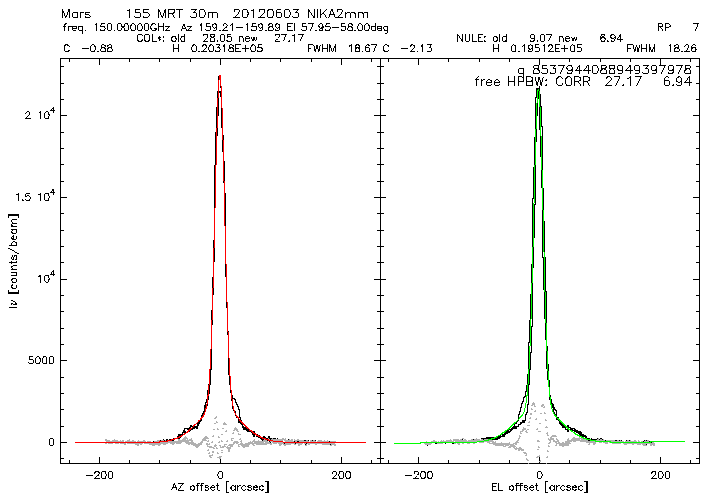
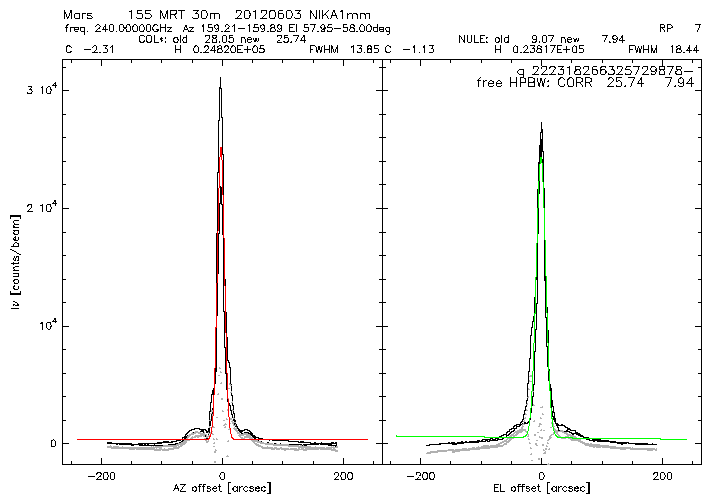
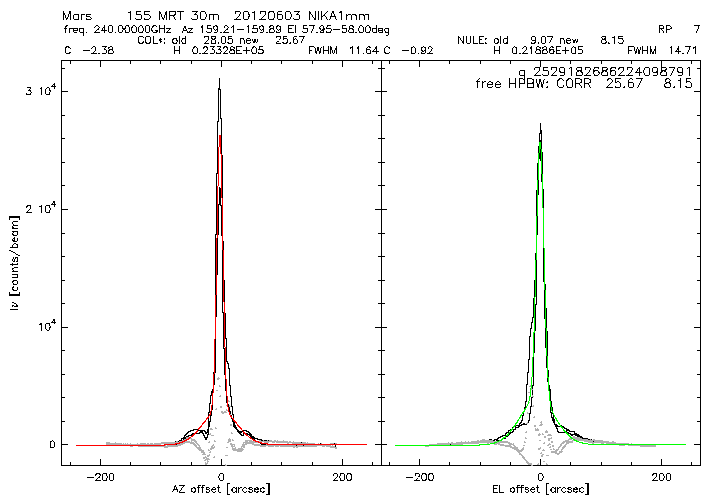
Effect of Focus
Below the plots showing one of the best focus we succeed to do: FWHM ~12" @ 1mm and ~20" @ 2mm => 2% from nominal value expected from simulations; so it could be better, but with the conditions we had this looks reasonable, and shows at least that the optics is certainly good, without major default. The focus procedure without wobbler seems to work pretty well.
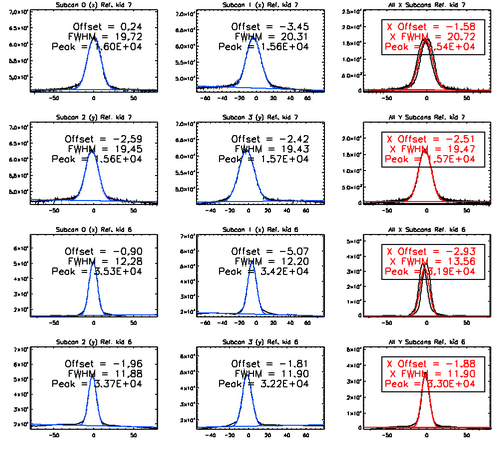
Effect of focus on the error beam: the figure below shows data of two pointing cross-scans, in red out of focus (-2mm, scan 04s202), in black after focussing (-1.6mm, scan 04s205). The effect on the error beam (getting negative) is not quite as expected. An effect of the electronics ?
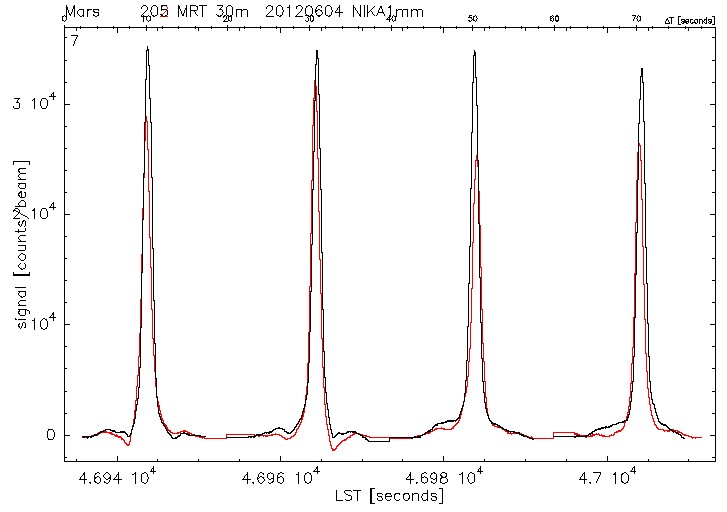
A similar (or same) effect shows the plateau: @1mm it is negative in a defocused map (see the figure "negative plateau @1mm per pixel" on 3-06-2012) and positive in a focused map (below). Any further systematics and dependance on other factors (e.g. sky load) are currently not known.
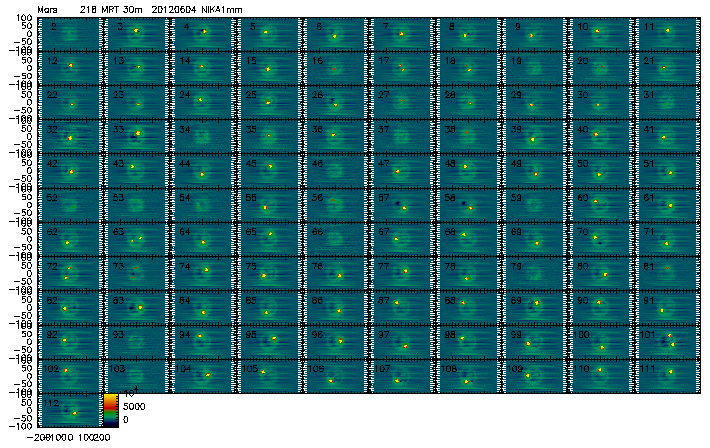
Note that the quality of our observations to investigate the plateau from Sunday 3-06-2012 is degraded because et have visibly an effect of focus drift, see Mars beams on central pixel, effects of atmosphere, focus and tests to investigate the plateau, SL June 13 2012
Noise Measurements
Sunday 3-06-2012
JFMP Noise measurements 2mm : 4 Hz/sqrt(Hz) 1mm: 4.5 Hz/sqrt(Hz)

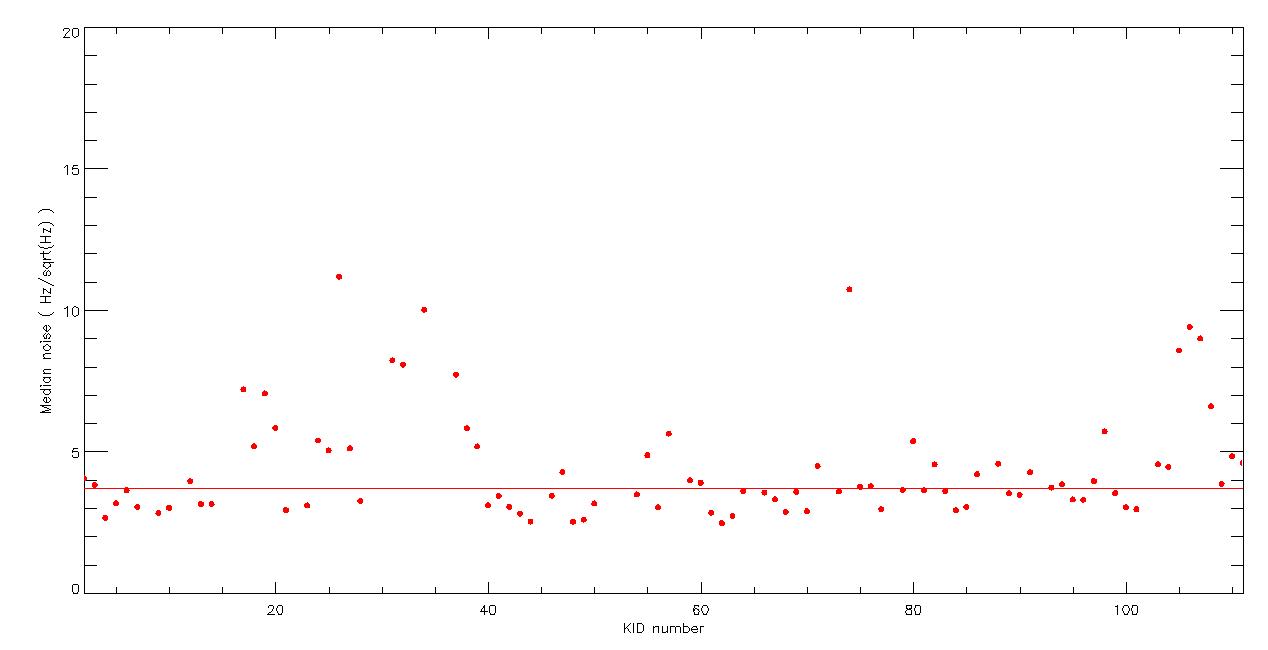
Glitches
Monday 4-06-2012
To give a hint of an answer to AMs question of 2-6-2012: there are gliches, quite different intensity and number per observation; some clearly correlated between the pixels, some not. Just two examples below. Shown are data of all OK pixels.
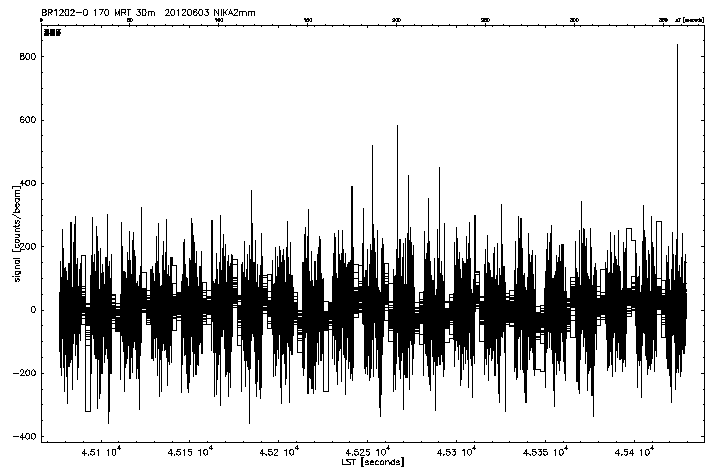
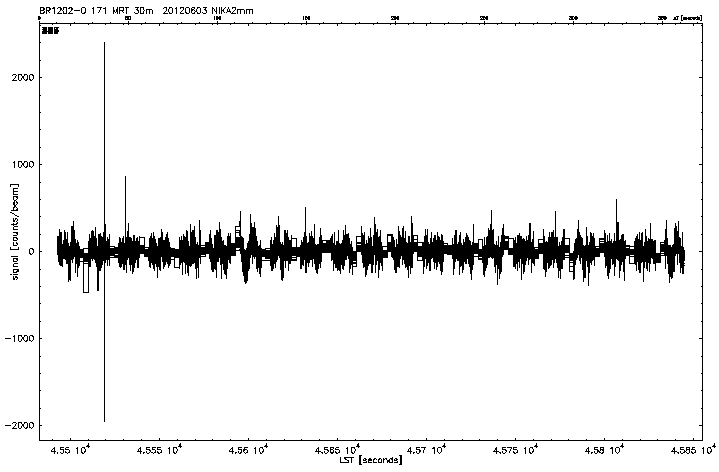
== Synchronization ==
Monday 4-06-2012
There is a remaining mismatch between the time of NIKA and the telescope of roughly -0.1sec.
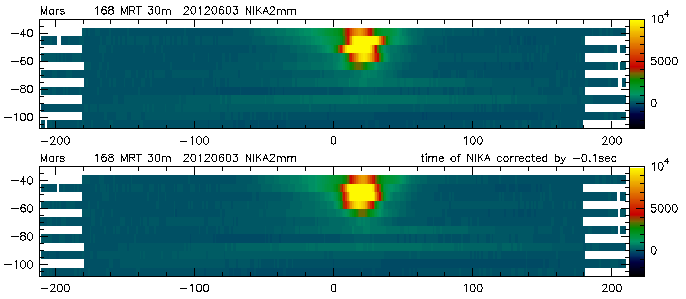
Update: some statistics on the synchronization.

